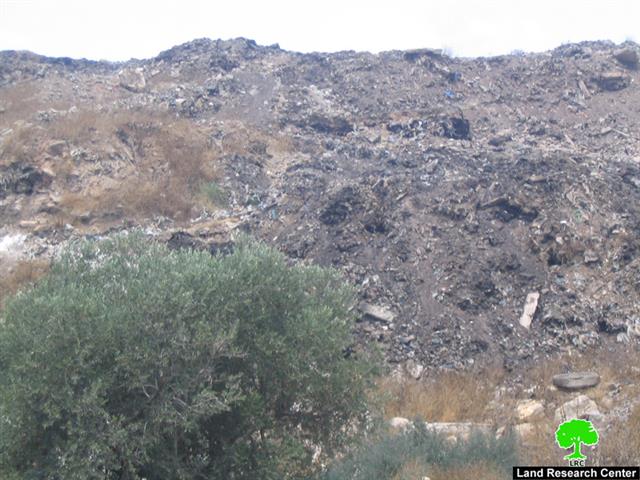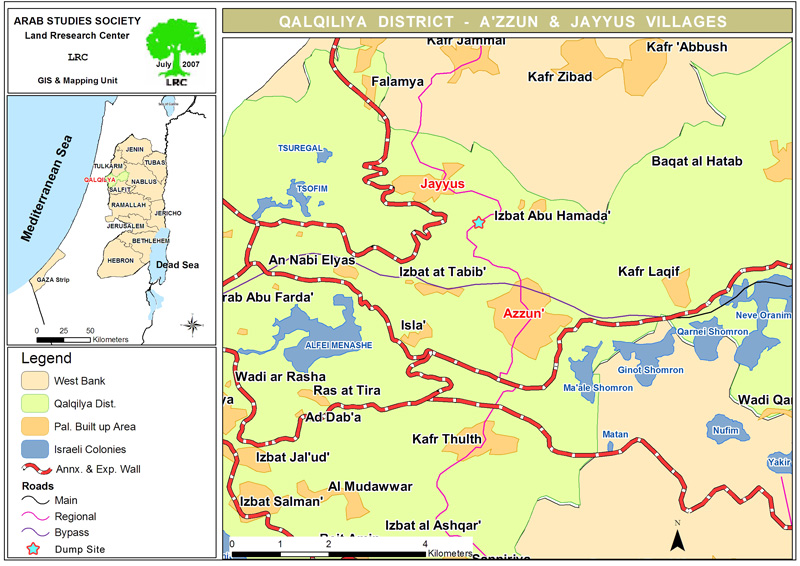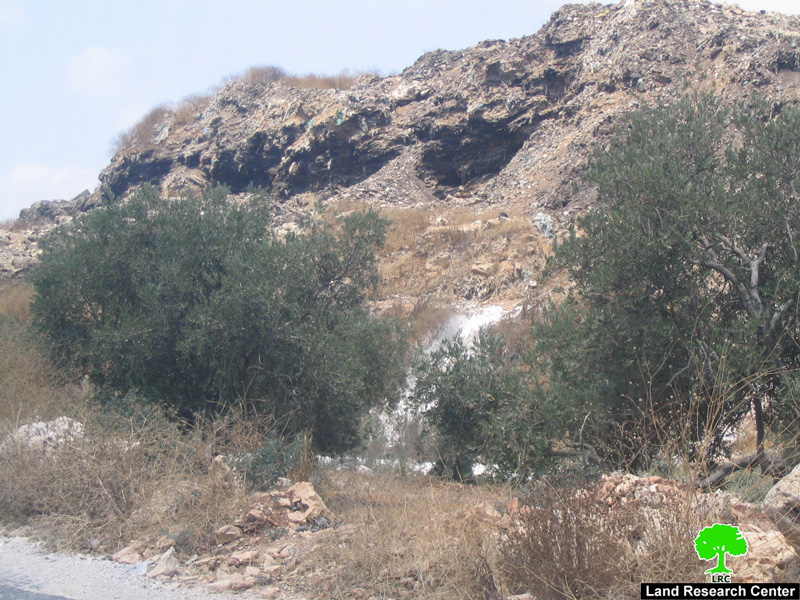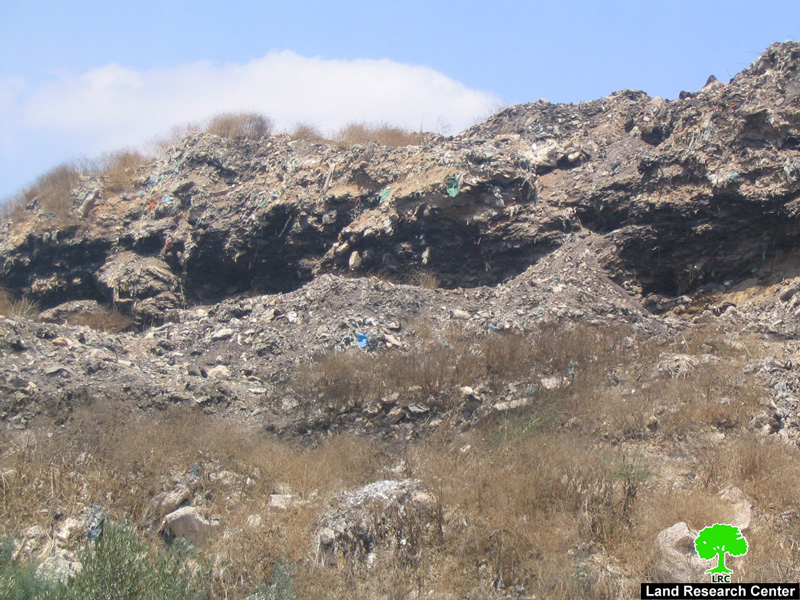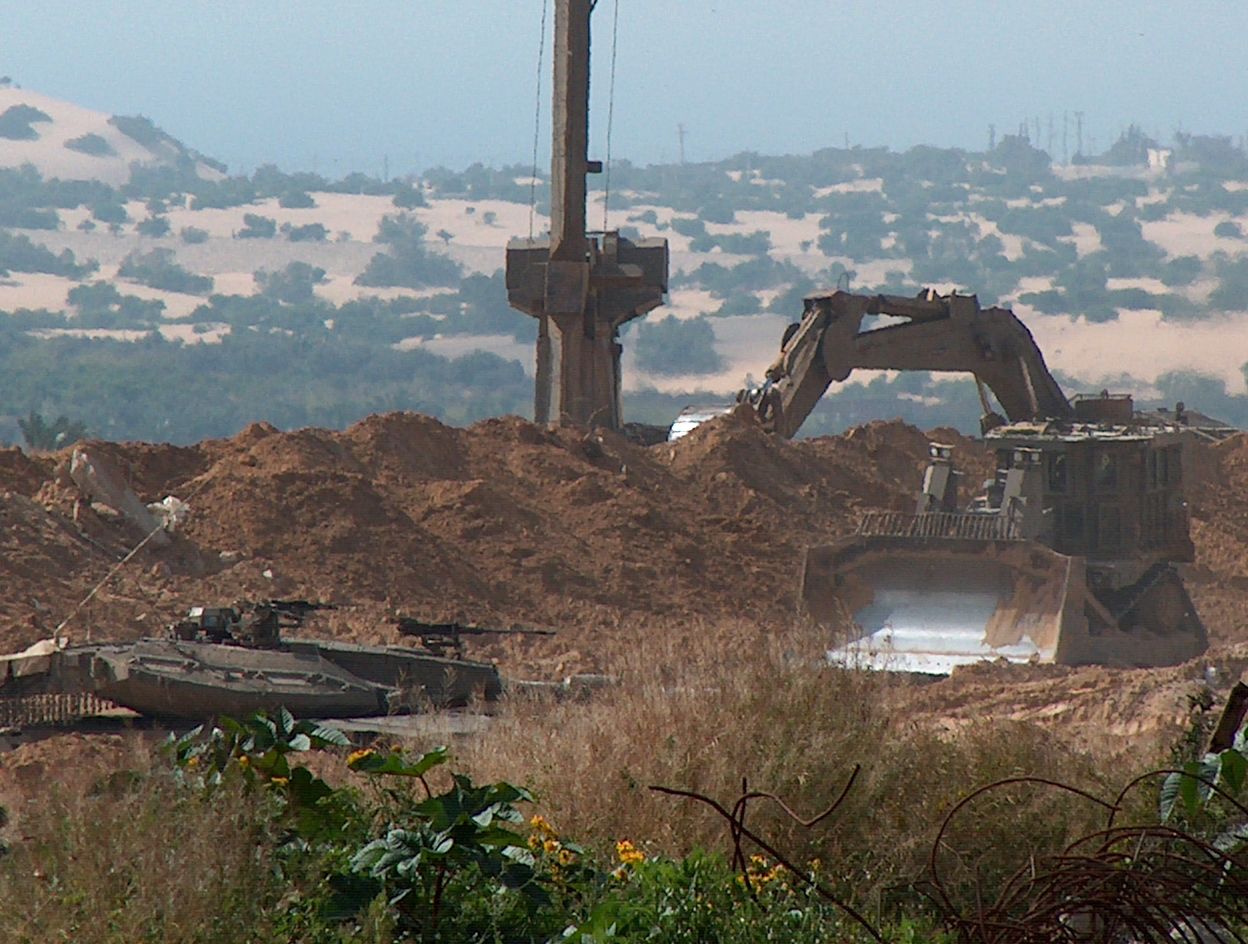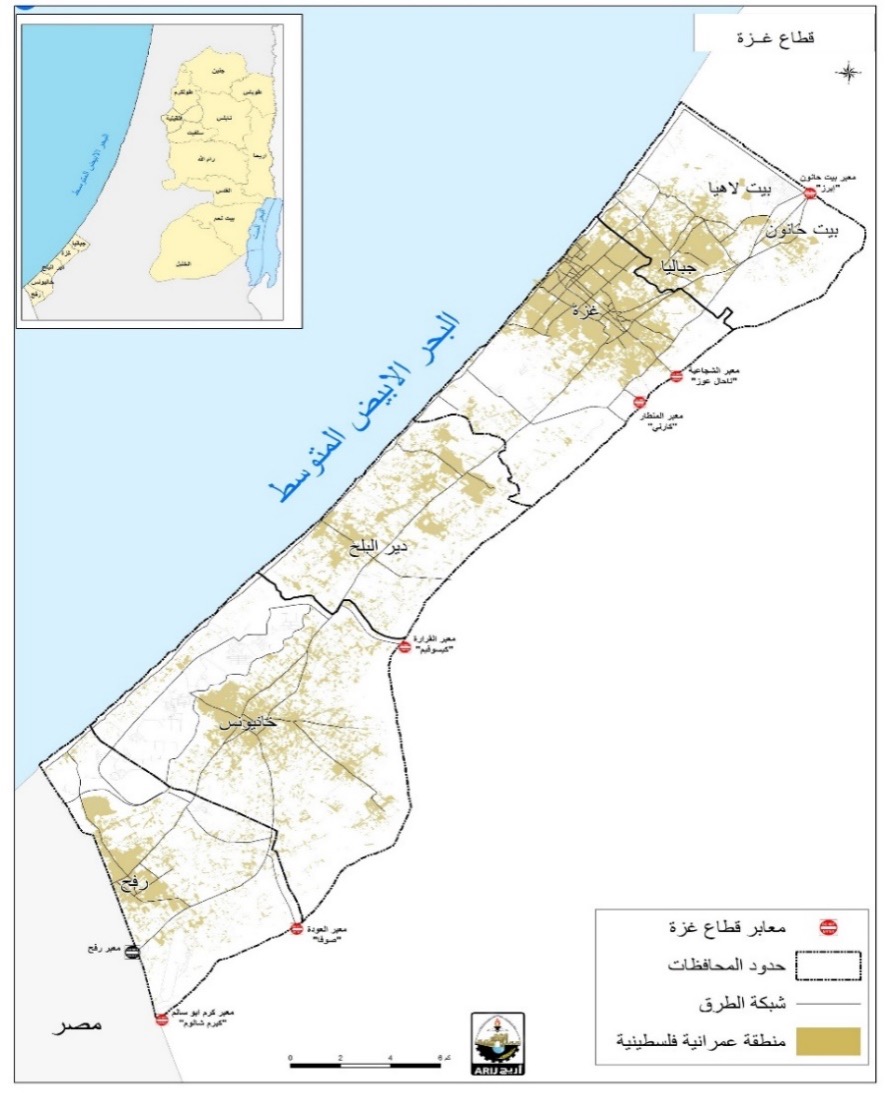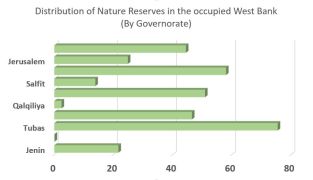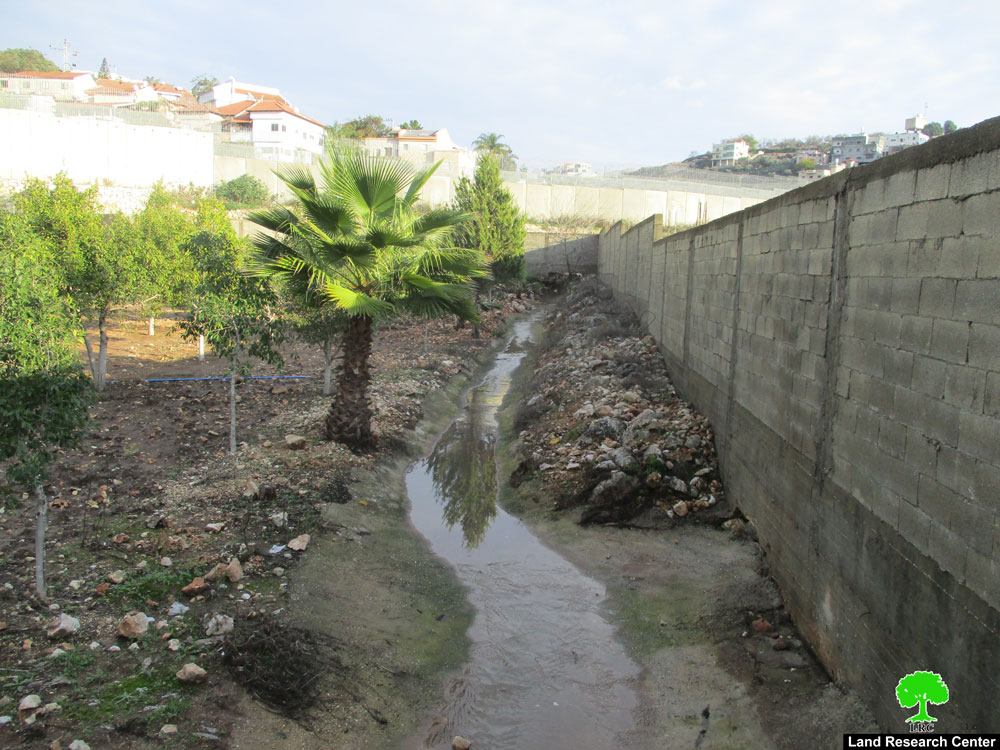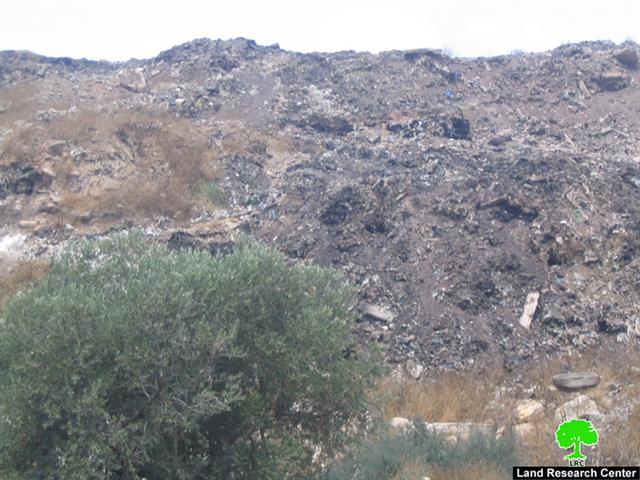(Photo 1: the dump on the main road between Azzun and Jayyus))
The Beginning
The garbage dumpsite was established in 1980 on a five-dunum piece of land owned by Mr. Jamal Abdel Nabi from the village of Jayyus. It located on parcel 2 parallel to the main Tulkarem-Qalqilia Road.
It became officially operational in 1989. Huge quantities of industrial and chemical waste from Israeli factories (located inside the Green Line and nearby colonies in Qana Valley) were dumped in the site. Such waste consisted of poisonous, cancer-causing and radio active materials that Israeli forces saw fit to get rid of it through dumping it beyond the 1949 Armistice Line (Green Line). See Map 1
Multiple complaints
As the piles of the poisonous waste started to pile up and its effect on the Palestinian population and environment began to appear, Palestinian local entities in the villages of Azzun, Jayyus and Sir submitted a number of complaints to the so-called Israeli 'Civil Administration' in the West Bank. Yet, the 'Civil Administration' contended that the dumpsite is located 2 kilometers away from Jayyus's Master Plan's limits and 1,5 kilometers away from Azzun's limits and, as such, does not cause any harm to the Palestinian population living near the site.
When the Palestinian Authority was established in 1993, the village councils and municipalities resumed their attempts to foreclose the site in coordination with the newly-established Palestinian Ministry of Local Governance. Scientific research studying the negative impact of the site on humans and the natural resources was presented to the Israelis along with the complaints. Israeli occupation authorities 'promised' to look into the matter, yet it continued to use the dumpsite until it became full beyond its capacity in the year 2000.
Affected Villages' Background
The presence of the dumpsite has affected at least the following three Palestinian villages:
|
Village |
Population |
Area (in Dunums) |
Built-Up Area (in Dunums) |
|
Azzun |
9349 |
9139 |
1209 |
|
Jayyus |
3742 |
13044 |
371 |
|
Saier |
866 |
3049 |
179 |
|
TOTAL |
13,957 |
25,232 |
1,759 |
Israeli Colonies in the Area
There are 8 Israeli colonies in the region of Wadi Qana, all of which used the dumpsite in the near past. The colonies are Yakir, Novim, Matan, Ma'ale Shomron, Ginot shomron, Karni Shomron, Neve Oranim and Emmanuel. The total population of these colonies is more than 13,000 colonists. The oldest colony of these is Ma'ale Shomron which was established in 1978.
( Photos 2 & 3: More photos of the harmful dump site)
The effects of the Dumpsite on Environment and Population:
-
Azzun's Municipality carried out in 2001, in cooperation with The Palestinian Ministry of Health and An Najah National University, an analysis of the underground water located in Azzun Al Shamali water well which is located 500 meters away from the site. The study found a high level of lead in the water which causes cancer at specific concentrations. In response, the Municipality added chlorine to the water as to disinfect it. Yet, it is well known that the chlorine can cure the microbial, but not the chemical, pollution caused by the chemical materials found in the dumpsite.
-
The Palestinian Environment Authority carried out in 2004 a study about the effect of the dumpsite on the surrounding communities. The study revealed that chemicals present in the site have led to the total pollution of the environs of the site. This fact is evident in the fact that there has been a sharp increase in disease cases such as muscle paralysis, blurry vision, high blood pressure and skin diseases (due to the presence of a large number of mosquitoes and insects). Other diseases included breathing allergies (which usually develops into lung cancer), ulcers and anemia (due to high content of Calcium in the water).
-
Tests carried out by the Palestinian Environment Authority indicated the presence of 17 poisonous materials in the dumpsite some of which are internationally forbidden.
-
Upon the establishment of the dumpsite, Israeli authorities did not care about the fact that Palestinians (many of whom are children) live in the immediate vicinity of the site.
-
According to statistics provided by the Palestinian Ministry of Health, the village of Azzun has the highest level of cancer cases in the northern parts of the West Bank as more than 100 cases have been reported of which 19 have died. The Ministry suggested that such high number of cases is caused by the dumpsite one way or another. Death cases include the 12-year-old boy named Adnan Ma'azouz Shubeita and the 23-years-old Ibrahim Yousef Abu Zahra. Also, Mrs. Aqela Fayeq Abdel Aziz (54 years old) is currently fighting death of brain cancer in Jordanian hospitals. Moreover, a large number of fetus deformation occurred in the stricken area.
-
The presence of the dumpsite has led to an increase in the number of stray dogs and wild pigs that have caused damage to Palestinian crops and spread fear among residents of nearby villages.
Colony Sewage:
In addition to what was listed above, the Segregation Wall surrounding the colony of Ma'ale Shomron and its water channels is considered to be a nightmare for the farmers of Azzun; the Ma'ale Shomron colonists took advantage of the rain fall last winter and pumped sewage through the channels towards Azzun's western side. This act has led to the pollution of more than 200 dunums of olive fields. The villagers are concerned that the sewage would reach Azzun's southern well (provides 43 m3 per hour) which is used for both domestic and agricultural purposes and is located 200 meters away from the wall. If such pollution takes place it would mean that the town will be deprived of its main source of drinking and irrigation water.
Prepared by
The Land Research Center
LRC


